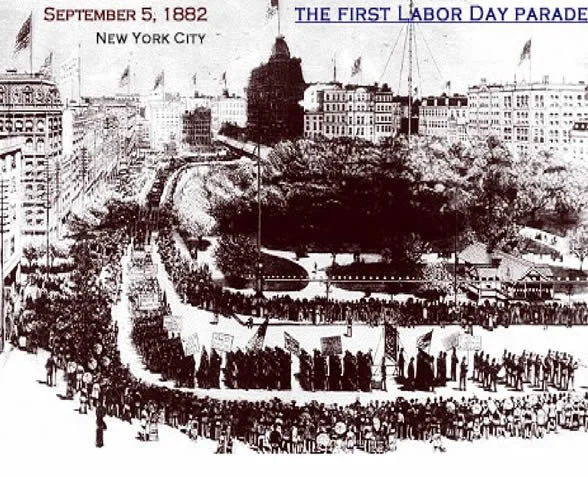Labor Day’s Historical Roots and Modern Significance
Labor Day, celebrated annually on the first Monday in September, stands as a tribute to the contributions and achievements of American workers. Its roots stretch back to the late 19th century, a period marked by intense industrialization and labor unrest. The holiday’s origins and its evolution offer a compelling narrative about the labor movement in the United States, particularly for public employees who are members of labor unions today.
The Birth of Labor Day
Labor Day’s inception is credited to the labor movement's relentless struggle for better working conditions, fair wages, and reasonable hours. During the 1880s, industrial workers faced grueling conditions: long hours, unsafe workplaces, and minimal wages. Amid these challenges, the labor movement began to gain momentum, advocating for reforms that would improve workers' lives.
The first Labor Day was celebrated on September 5, 1882, in New York City. Organized by the Central Labor Union, the event was a parade featuring workers from various trades, celebrating their collective strength and solidarity. This initial celebration was a success, laying the groundwork for future observances. In 1894, amid widespread labor unrest, including the Pullman Strike—a major railroad strike that ended in violence—President Grover Cleveland signed a bill making Labor Day a federal holiday. The holiday was intended to appease the labor movement and acknowledge the crucial role workers played in the nation’s progress.
Labor Day and the Evolution of Public Employee Unions
Public employees have always played an essential role in the functioning of society. Historically, these public workers were often excluded from many labor rights enjoyed by their private-sector counterparts. However, the mid-20th century saw significant strides in public sector labor rights, largely due to collective bargaining efforts and growing union influence.
The rise of public employee unions can be traced back to the early 20th century, with organizations like the American Federation of State, County and Municipal Employees (AFSCME) founded in 1932. Employees of our own county joined this labor movement by founding the San Luis Obispo County Employees’ Association (SLOCEA) in 1947. The national breakthrough came with the passage of key legislation in the 1960s and 1970s, including the Civil Service Reform Act of 1978 and the Federal Service Labor-Management Relations Statute, which granted federal employees the right to join unions and engage in collective bargaining.
These laws marked a turning point, allowing public sector employees to advocate for better working conditions and fair compensation more effectively. Unionized public employees began to enjoy greater job security, improved benefits, and more equitable working conditions, reflecting the broader goals of the labor movement that Labor Day symbolizes.
Labor Day Today: A Reflection of Union Achievements
In contemporary America, Labor Day serves as a reflection on the progress achieved by workers and their unions. For public employees who are members of labor unions, this holiday holds special significance. It’s a moment to celebrate the victories won through collective action and to recognize the ongoing efforts to address new challenges.
Unions still play a crucial role in negotiating contracts, addressing grievances, and ensuring that the voices of public employees are heard in policy discussions.
Moreover, Labor Day remains a powerful reminder of the importance of solidarity and collective bargaining. While the landscape of labor rights has evolved, the fundamental principles of fairness, respect, and equality continue to drive union activities. Public employees, through their unions, help to maintain these values and push for continued progress in labor rights.
Labor Day is more than just a long weekend or the unofficial end of summer; it is a celebration of the labor movement’s achievements and a testament to the ongoing efforts of workers across various sectors. For public employees in labor unions, the holiday is a moment to honor their collective successes and renew their commitment to advocating for workers’ rights. As we celebrate Labor Day, it’s essential to recognize the historical struggles that have shaped the present and to continue working towards a future where all workers are treated with dignity and respect.
Brooke Daphne
Labor Representative


